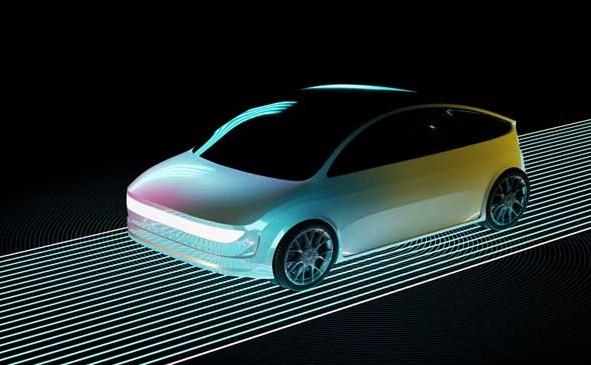It appears that the State of Michigan is serious about getting people to leave their gasoline and diesel vehicles behind once and for all, and join the clean, green vehicle revolution that includes electric and autonomous vehicles (EVs and AVs).
Last month, the Detroit Free Press reported the state’s support for a public wireless charging infrastructure to be built on 1.6 kilometres (1 mile) of roadway made from magnetizable concrete, a product of the German startup Magment GmbH. Magment currently uses its MagPad technology in warehouses where it continuously recharges forklifts at a transfer rate of 10 Kilowatts.
The Michigan roadway pilot looks to increase the charge rate to between 200 and 250 Kilowatts. That’s enough to keep a heavy truck continuously charged on the road. If successful, the project would be the first demonstration of a working electrified roadway in the United States. The hope is to roll out roads of this type statewide and represents one of a number of initiatives by Michigan aimed at improving mobility and creating new job opportunities for its workers who are heavily invested in the automotive sector.
Called an Inductive Vehicle Charging Pilot, the test roadway will be located in the Greater Detroit urban area. EVs will wirelessly recharge while driving on the road surface. This is game-changing technology. Instead of EVs stopping to plug in, they will have a source of continuous energy coming from the road surface. The electricity produced by the magnetizable concrete can come from the grid or from green renewable energy sources such as wind turbines or solar panels.
At the time of the announcement Paul Ajeba, Michigan’s Director of the Department of Transportation (DoT) noted, “We know the future of mobility involves connectivity and this initiative dovetails nicely with our other successes linking vehicles and infrastructure through technology…This is a model we will build on across the state.”
A Request for Proposal has been issued for a contractor to build the pilot with the winning firm to work closely with the DoT to create what will be the first public installation of this type of technology in North America. European Union countries and the United Kingdom have been experimenting with road charging systems already. And in North America, the only other installation can be found at a test facility in Indiana.
The magnetized roadway is just one part of a much larger transportation strategy for the state. CAVNUE, a company founded by Sidewalk Infrastructure Partners (SIP), the Alphabet subsidiary that was involved in an experimental Toronto neighbourhood that ultimately failed, is leading an additional project to create a first-of-its-kind connected and autonomous vehicle (CAV) corridor in Southeastern Michigan. The autonomous vehicle corridor would run from downtown Detroit to Ann Arbor. CAVNUE plans to build reserved lanes designed to incorporate autonomous technologies for operating buses, vans, shuttles, freight and personal vehicles.
Co-founder of SIP, Brian Barlow, describes the Michigan plan as transformative. In a press release issued by the Michigan Economic Development Corporation, he states, “The time has come to start to integrate all of the momentum happening on the vehicle technology side with an equally strong push for innovation on our road assets themselves. We believe that combining technology and physical infrastructure can help unlock the full potential of CAVs and fundamentally transform mobility to improve safety, congestion, and public transit.”
Michigan is in a race with other locales. In May of this year, I described eRoadArlanda, a Swedish pilot project to electrify roadways using a power rail embedded in the road surface. Vehicles equipped with a sensor would detect the rail causing a movable arm to deploy to make contact. This is different from the Inductive Vehicle Charging technology using a roadbed made of magnetizable concrete. The Magment technology makes no reference to the need for any onboard EV receiver as a requirement, although I would think something is missing from the picture.
















